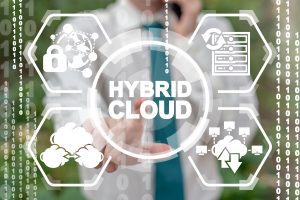Paving the way for green technology

Happy Earth Day! To celebrate, Francis O’Haire, Group Technology Director for DataSolutions, shares in an exclusive with Top Business Tech how companies can work towards achieving sustainability goals.
Climate change and the need for sustainability is no longer in question for the majority of people and organisations. We don’t need to convince anybody that things need to change in this respect but what does that change look like? How can technology (in particular information technology) help us to reach our sustainability goals?
As primarily fossil fuel led industries, the transport and energy sector are the biggest culprits when it comes to carbon emissions but IT is a huge contributor as well. Whilst there are discrepancies across different studies, a review of nearly 170 international studies conducted by the non-profit The Shift Project showed that by 2018 the carbon footprint of digital technologies had eclipsed that of the entire aviation industry – 3.7% for digital technologies compared to 2.5% for aviation! But things are changing and the following areas illustrate how sustainability and ‘green’ IT can help to shape tomorrow’s world.
Remote working and WFH
Generally speaking, practices such as remote working and working from home (WFH), serve to lower travel requirements and reduce energy consumption. The current pandemic has shown us that a vast number of people do not need to travel to an office every day to be productive in their jobs – just as long as they have the right technology to access all of their applications and data as effectively as when in the office. In addition to the obvious benefits from less commuting, there are also opportunities for organisations to reduce office space and the commensurate energy consumption. Indeed, a recent CEBR study found that by reducing commuting hours and consolidating real estate through sustainable IT practices, remote work could help reduce annual CO2 emissions by 214 million tons. Citrix, the leader in Digital Workspaces, has created technology that allows people to get work done from anywhere on any device, whilst also reducing energy consumption. Their technology also allows organisations to transition to cloud and offload applications from inefficient on-premise infrastructure.
Interestingly, research from Purdue University, Yale University and the Massachusetts Institute of Technology shows that leaving your camera off during a web call can reduce its carbon, water and land footprints by 96%. This is primarily due to the resources required across the entire path to process and transmit the significant amounts of extra data and CPU power required by video.
The Cloud
Large cloud providers such as Amazon, Microsoft and Google have made significant efforts to make their services carbon neutral either now or in the near future so migrating IT services to public cloud can significantly reduce an organisation’s own carbon footprint. By switching to a public cloud, businesses not only benefit their workplace, but also the environment. Managing and processing data on a local server greatly increases carbon emissions. With the cloud, not only are fewer servers used, but they are powered more efficiently, reducing the carbon impact on an organisation’s data centre. Cutting down on data centers by switching IT operations to a public cloud provider significantly lowers carbon emissions and electricity consumption.
One fear that serves to dissuade many organisations from transitioning to more energy efficient cloud services, is how to secure their data and applications there. However, vendors such as CheckPoint and ColorTokens offer solutions which are specifically designed to secure corporate applications, data and systems in the public cloud. Some solutions can form the basis of a Zero-Trust approach to cloud security. They can overcome the limitations of legacy perimeter security solutions such as firewalls, which are not capable of securing the highly dynamic and distributed nature of multi-cloud environments through the principle of micro-segmentation.
Longevity
Manufacturers are looking at ways to prolong the life of equipment therefore lowering recycling requirements. For example, digital workspaces and virtual desktops, as delivered by Citrix, can be displayed on thin client devices which typically have a useful lifespan of 5 to 7 years, compared to a typical PC or laptop which lasts no more than 3 to 4 years. IGEL, which is a leading producer of energy efficient and low production footprint thin clients, also offers a solution which allows an old laptop or PC to be repurposed as a thin client, thereby prolonging its useful life. According to statistics from the UN, an estimated 50 million tons of electronic waste are generated worldwide each year – and the trend is rising.
Coronavirus has been devastating but it’s also shown us how much is possible through working collaboratively and how quickly we can adapt our behaviour to help protect others. The climate crisis is no different, even though the challenge is much bigger. We can still slow down global warming, but we’ll need urgency, accountability and sustained commitment to achieve it. Technology will play a big part here hopefully.
For more news from Top Business Tech, don’t forget to subscribe to our daily bulletin for the latest technology news!
MORE ARTICLES
